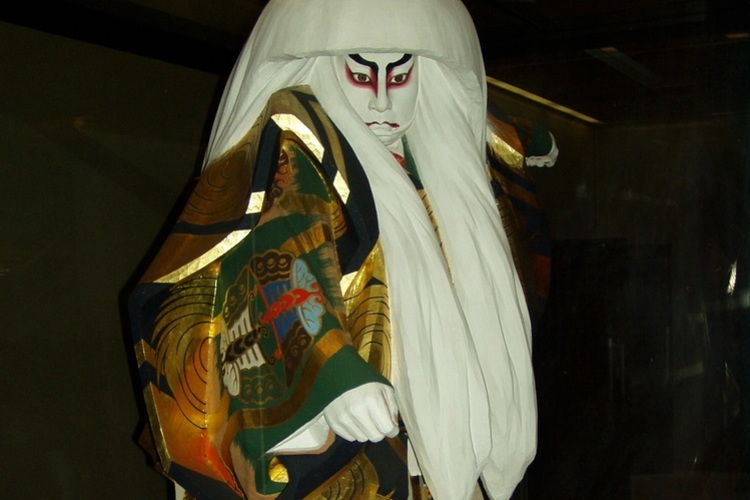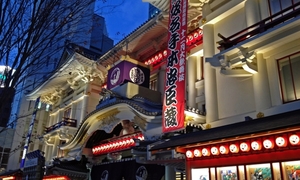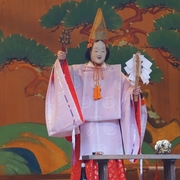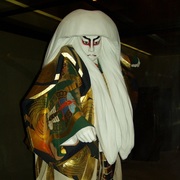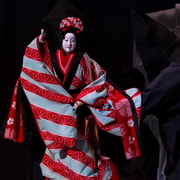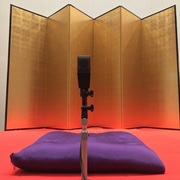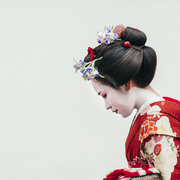Kabuki is a popular form of musical drama which is known as Japan’s representative traditional performance arts.
It is sometimes translated as "the art of singing and dancing" as the three kanji characters of Kabuki (歌舞伎) from the left, means “to sing (歌), “dance (舞),” and “skill or craft (伎)”
Many people tend to get a stereotyped impression that Kabuki is meant only for upper class includes some celebrity who watch in Kimono or designers’ clothes.
However, Kabuki was, in fact, originally played as a popular entertainment for common people; while “Noh,” a classical performance art that combines dance, chanting and music play, was meant for upper class (samurai in particular) as liberal arts.
Therefore, government officials and parents of upper class at that time considered Kabuki a low-grade entertainment and they warned people around them “Don’t watch Kabuki!”
In this article, we will provide the following three fundamental points for beginners to be able to enjoy Kabuki.
1. Kabuki was a total entertainment that covered “dramas, news programs and fashion shows” back in time when no TV, internet or smartphones were available.
2. Why Kabuki is performed by male actors only?
3. Three mains genres of Kabuki tales
If you have ever thought that Kabuki is somewhat difficult to approach, this would be the right article for you. Enjoy!
Kabuki as a total entertainment that combined TV dramas, news and fashion shows
Back in Edo Period (1603-1868), can you imagine how people would know the current events and latest fashion trend without any media like TV, smartphone or internet?
Then, you may come up with an idea that Kabuki played a role of total entertainment that covered the elements of dramas, news and fashion shows.
D ramas
Similarly, to today’s TV dramas and movies that are still mass produced with popular actors and actress of the time, every month new Kabuki tales were produced and performed by popular actors and actresses, and enjoyed by all generations from young to senior during Edo period (1603-1867).
Just like many contemporary TV dramas or movies that fall into the genres of romantic, suspense or detective regardless of which country you live; Kabuki tales are categorized either romance or revenge from murder as well.
You can see that human’s preference about dramas seems universal and does not change very much over time.
N ews
Also, Kabuki took a role of news or tabloid news shows during Edo period.
For example, there was an actual incident of double love suicides committed by a young couple that took place in the town of Sonezaki.
Monzaemon Chikamatsu, a news reporter and playwright at that time, gathered materials of this actual case and developed into a drama named “Sonezaki Shinju (Love Suicide of Sonezaki)” (initially meant for puppet play, and later adapted to Kabuki)
Just for your information, here is a good article that addresses Japanese mentality about death and suicide by referring to Monsaemon’s works.
(https://www.japantimes.co.jp/news/2018/03/17/national/history/till-death-us-unite-japans-dark-tales-love/#.W7Qx2WhKjIU)
Another famous Kabuki tale in this genre is “Kanatehon Chushingura” popularly known as Chûshingura, which is often translated to “The Treasury of Loyal Retainers,” or "The Revenge of the 47 Ronin."
This is Japanese most famous loyalty-revenge story of 47 masterless Samurai who killed a government general as a revenge for their master, which is based on the actual events happened at the beginning of the eighteenth century.
The author added the elements of romance and human dramas when shaping into a Kabuki play.
During Edo period where means of communication were very limited and literacy rate was low, people used to go watch Kabuki to get news just like we watch tabloid TV shows.
By the way, Monzaemon Chikamatsu is considered as an extremely popular playwright just like Shakespeare of Japan.
F ashion shows/magazines
Popular Kabuki actors at that time were regarded as fashion models or icons, and many fans copied the patterns of their stage costumes and hair styles.
“Ichimatsu moyo (checkered pattern)” is one of the good examples.
A popular Kabuki actor, the first generation of Sanogawa Ichimatsu, wore trousers in this pattern on the stage and it became so popular that people started wearing Kimono in this pattern, which led to a minor fashion craze in Edo.
This pattern was eventually referred to as “Ichimatsu moyo.”

You can now see that Kabuki functioned as fashion shows/magazines as well.
Why female roles are played by male actors?
There is no female actor in Kabuki.
Both male and female acting roles are played by men.
Interestingly, it did not start in this style.
Let’s look into the roots of Kabuki and how it was transformed.
O kuni Kabuki
During the period from Azuchi-Momoyama (around 1570 -1603 ) to early Edo Period (1603-1868), a fascinating female group who performed “kabuki odori (dance)” appeared in Kyoto, just like Spice Girls in 1990’s.
This phenomenon was originated by a young girl from Izumo region, whose name was Okuni.
Her performances were based on the ritual dances as she had been working as an attendant at the Izumo-Taisha Shrine.
When Izumo Taisha needed funds for repair work, she started traveling around the country and danced for fund raising.
Her unique and attractive performance became popular day by day and people started calling “Okuni Kabuki”
F emale Kabuki
Okuni’s troupe called “Okuni Ichiza,” continued raising money for Izumo Taisha Shrine.
Okuni’s popularity spread out nationwide and many female groups throughout the country copied this style.
This Kabuki dance performed by these women was called "Onna-kabuki" (female Kabuki).
Okuni’s dances considered as much suggestive as some people gossiped that she used to be a prostitute.
Over time even prostitutes and courtesans started to imitate her style, and performed with erotic contents on the stage of red-light district.
This led to a prostitution system where men come to watch to pick their favorite stage dancers for one night stand.
As a result, Tokugawa Shogunate passed down an edict that banned women from performing Onna Kabuki for being too erotic and harmful to public morals.
W akashu Kabuki
Due to the prohibition of Onna Kabuki, the desire of common people for watching Kabuki Odori performed by good-looking young people needed to be fulfilled.
A new style of Kabuki called "Wakashu (young boys) Kabuki" was invented.
This was performed by handsome young boys just like idol groups consisted by young boys around 14-16 years old.
Interestingly, Japanese society during Edo period was very open to sexuality that gay relationships were publicly accepted.
Thus, these good-looking boy performers of Wakashu Kabuki immediately became the targets of male prostitution.
As you can imagine, Wakashu Kabuki was eventually banned by the Tokugawa Shogunate for the same reason with Onna Kabuki(Female Kabuki).
Y aro Kabuki (Adult Male Kabuki)
After Wakahu kabuki has been banned, "Yaro-kabuki" performed by adult males was born as an ultimate mean.
This is the style of Kabuki that has been maintained up to now.
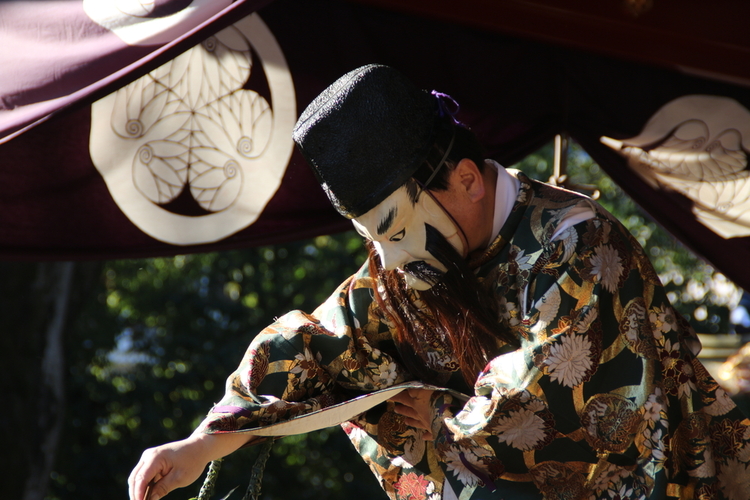
Three genres of Kabuki: Jidai Mono (Historical Plays,) Sewa Mono (Plays of Common Life) and Shosagoto (Pantomimic Plays)
Overall, Kabuki tales are categorized into the above three genres, and most contemporary Kabuki plays are performed with a set of these three genres.
J idai-Mono (Historical Plays)
Jidai-Mono features historical events, society or characters, prior to the Edo period (1610-1867).
To be precise, Muromachi period (1336 – 1573), Kamakura period (1185 – 1333) and ancient times, which were intended to make reference to contemporary events during Edo period.
Just because the depictions of contemporary events, particularly, events related to Tokugawa Shogunate, were under strict governmental control, Jidai Mono stories were made to use historical or literary references as metaphors for current events.
The famous tale of Kanadehon Chūshingura, known as 47 Retainers mentioned in the earlier section is a good example which refers to Muromachi (1336-1573) period instead of Edo-Genroku period.
In order to avoid censorship by the ruling Tokugawa Shogunate, it was set in the earlier Muromachi period (1336-1573) and the names of the all principal characters were altered.
S ewa Mono (Domestic Plays)
Sewamono dramas depict everyday life of common people in contemporary normal environments at that time, something like docudrama based on actual stories of romance or humanity that we currently find in Yahoo News or Huffington Post.
Docudrama such as “Sonezaki Shinju (The Love Suicides of Sonezaki) mentioned earlier is a good example of Sewamono.
S hosagoto (Pantomimic Plays)
Singing and dancing in Kabuki are the traditional essentials of Kabuki passed from its initiator, Okuni.
In each Kabuki play, the style of dance performance with background music called “Shosagoto” is included as part of play.
Shosagoto is played for a change just like a refresher during the play.
Remember that Kabuki was meant for common people’s entertainment. Experience classic words and expressions back in time!
Finally, let’s revisit the initial question that many people including native Japanese speakers find Kabuki is difficult to approach.
As Kabuki uses classical words and expressions that were in fashion at that time, it is natural that most people feel difficult to understand.
Imagine that if you had a chance to talk with people from Edo period, they would not understand the names of current pop-music stars you talk about, or if you watch a Shakespearean play, you probably would not really understand the classic language.
Please remember that main genres of Kabuki are romance and revenge or detective dramas, and Kabuki was originally designed to be a total entertainment for common people.
Kabuki can be enjoyed just like you watch romantic dramas or detective dramas on TV or movies.
We hope this article helps you familiarize yourself with Kabuki so that your future experience of Kabuki would be more enjoyable.
Thank you for visiting and reading this page!

